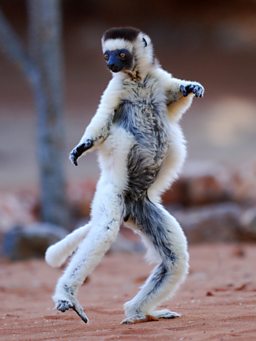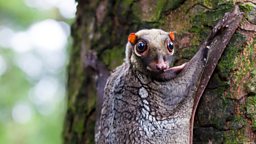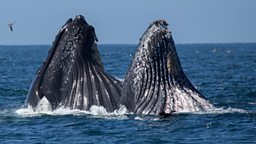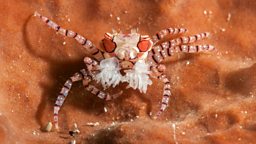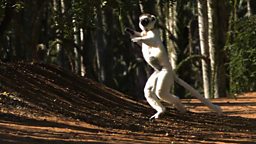Main content
Sifaka
How do they move across the ground?
- Very long legs and very short arms are perfect for the sifaka’s life in tall, upright trees. They are known as 'vertical clingers', as they sit upright and jump up to 10 metres to reach other trees.
- Their disproportionate limbs makes it impossible to run on all fours. By performing a sideways ‘gallop’ they can cross distances whilst only using the minimum amount of energy.
- Sifakas gallop crossing one leg one in front of the other and it is thought that they may be able use the energy from a landing to generate at least some of the energy needed for the next takeoff.
On the ground juvenile sikakas use a hop rather than a gallop (both feet land together). Moving with both legs together allows the juveniles to producer power despite not having as long thighs as the adults.
The group tends to travel by following one another on the same path as it is a ‘tested’ route free from hazards.
More about sifaka's:
- The name ‘sifaka' is Madagascan word and comes from the lemurs’ characteristic “shif-ahk” call which they use to warn fellow group members of a potential ground predator or to threaten enemies and intruders.
- Sifakas rely primarily on foliage as well as fruit, seeds and flowers, so they spend most of their time in the trees.
- They tend to live in mixed male and female groups of between four to eight individuals.
- Mothers give birth to only one offspring per year, and they will carry them until they reach 5 to 6 months of age.
